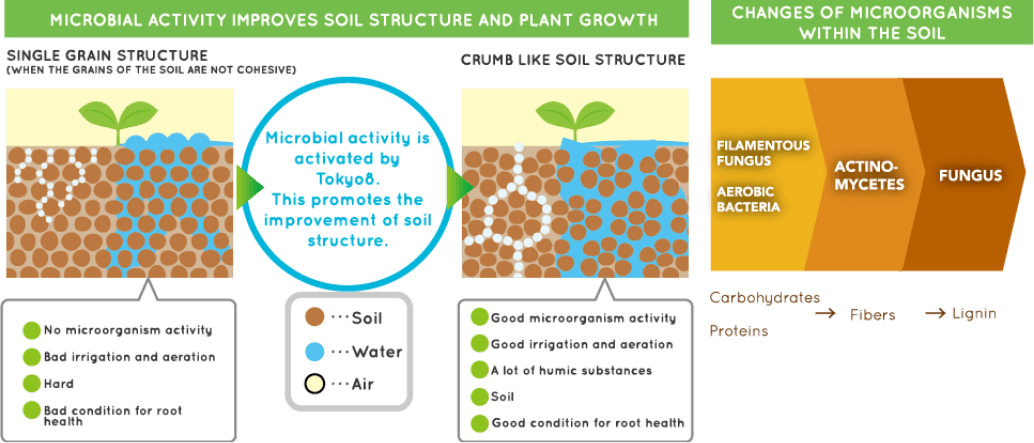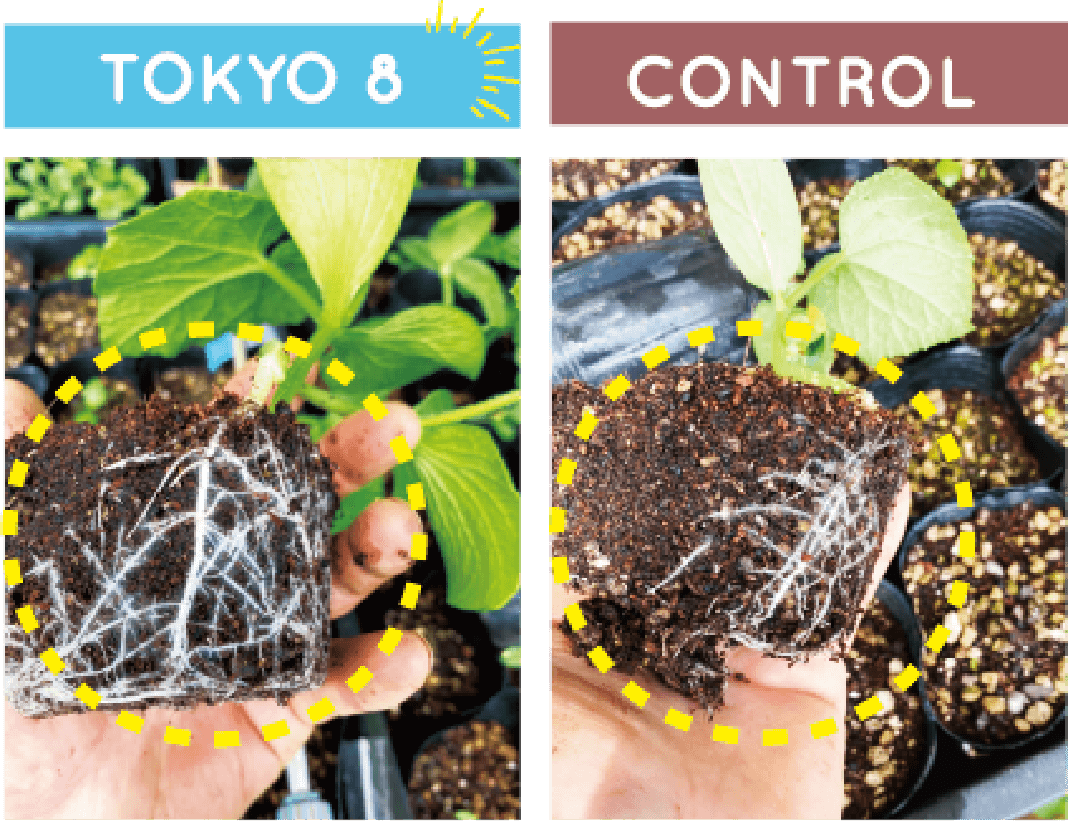
Beyond the nursery+ α
Tokyo 8's effects are applied to the soil, which is the foundation of agriculture. The importance of soil has been widely discussed in modern agriculture, and one of the secrets is microorganisms. Microbes do more than just break down organic matter (compost and biomass). The humic substances they produce in the process change the properties of the soil. Soils with low microbial content gradually become monogranular or clay-like.

Contributing to sustainability through soil improvement
Soils with few crevices and no air space, or soils that dry out without retaining moisture, are the most common type of soil. Soils rich in microorganisms are also home to many other soil organisms, and the humic substances produced by these organisms hold soil particles together to form aggregates. The increase in the number of these particles creates gaps in the soil, creating a soft and fluffy texture. This is called a granular structure. Dumplified soil contains more air and retains moisture and organic matter.The richness of nutrients, moisture, and air, combined with the large number of gaps, prevents plants from rooting in the soil. The gaps are also more hospitable to microorganisms, which can help reduce the loss of microorganisms due to heavy rains and storms, thereby further increasing biodiversity. The structure of this humic substance is about 58% carbon, so increasing the amount of humus leads to storing more carbon in the soil, and increasing the number of farms with a densely packed structure will increase the carbon offset effect. By converting microorganisms to farmland, we can contribute to the transformation of our planet into a sustainable one.

